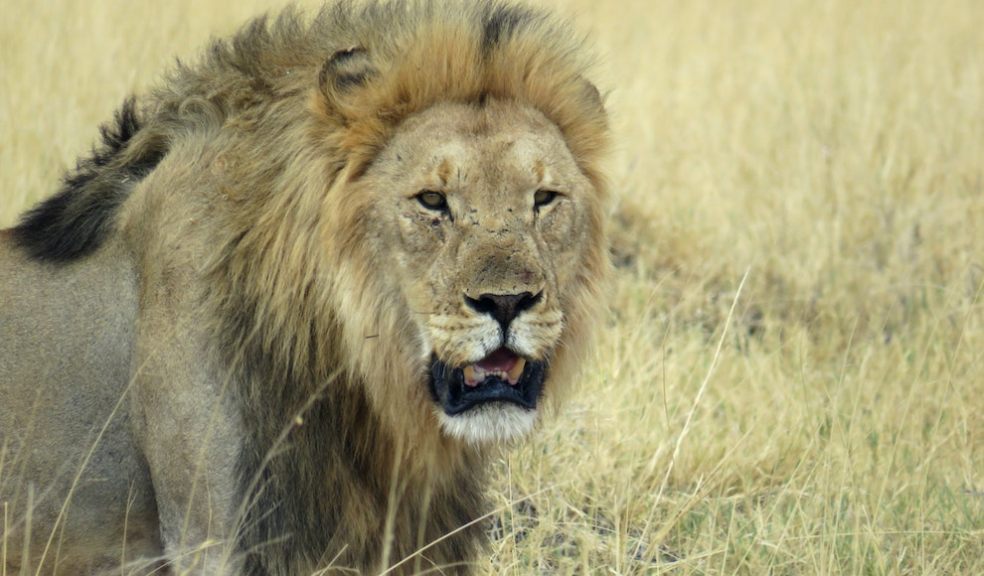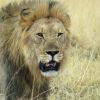
The Magnificent Wildlife of African Safaris
African safaris offer a unique and unparalleled opportunity to witness some of the world's most iconic and majestic wildlife in their natural habitat. From the vast savannas to dense jungles, Africa's diverse ecosystems are home to a remarkable array of animals, each with its own captivating story to tell. In this article, we'll embark on a virtual safari to explore the incredible animals you can encounter while journeying through the heart of Africa.
The African Big Five
The term "Big Five" was coined by big-game hunters, representing the most challenging and sought-after animals to hunt. Today, these magnificent creatures are the stars of African safaris, but they are now protected and admired for their intrinsic value rather than as trophies:
1. African Elephant: The world's largest land mammal, the African elephant, roams the African savannas and forests in small family groups or large herds. Known for their incredible size, intelligence, and distinctively shaped ears, these gentle giants are a must-see on any safari.
2. African Lion: The undisputed king of the jungle, African lions command attention with their majestic manes and powerful presence. These social cats are often spotted lounging in the shade or engaged in dramatic hunts, showcasing their cooperative hunting skills.
3. African Leopard: The elusive and solitary African leopard is a master of stealth and camouflage. With their striking spotted coats and keen senses, they are a rare but thrilling sight on safari, often seen lounging in trees or stalking prey.
4. African Buffalo: The African buffalo, also known as the Cape buffalo, is a robust and formidable herbivore. Often found in large herds, they are known for their unpredictable behaviour and impressive horn span.
5. African Rhino: There are two species of African rhinoceros: the black rhino and the white rhino. Both are critically endangered due to poaching, making sightings of these magnificent creatures a poignant and rare experience.
What other animals can you find on African safaris?
The Graceful Giraffe
Giraffes, with their towering necks and distinctive spotted patterns, are among Africa's most iconic and elegant animals. These gentle giants roam the savannas, using their long necks to reach the most tender leaves on acacia trees. Observing these graceful creatures as they graze or amble through the landscape is a captivating sight.
The Majestic Cheetah
Known as the world's fastest land animal, the cheetah is a sight to behold on the African plains. With their sleek bodies and distinctive black "tear tracks" running from their eyes to their mouths, cheetahs are expert hunters, capable of incredible bursts of speed to catch prey.
The Enigmatic African Wild Dog
African wild dogs, also called African painted dogs, are highly social and intelligent carnivores known for their striking, patchy coats. These elusive canines are excellent hunters, using teamwork and strategy to chase down their prey. Observing a wild dog pack on the hunt is a rare and exhilarating experience.
The Towering African Elephant
The African savannas are also home to another fascinating species of elephant, the forest elephant. Slightly smaller and more elusive than their savanna cousins, forest elephants are known for their gentle disposition and love of dense jungle habitats.
The Playful Hippos
The hippopotamus may not be the first animal that comes to mind when you think of African safaris, but these hefty herbivores are often found in rivers and waterholes throughout the continent. Despite their seemingly docile nature, hippos are known for their aggressiveness and are responsible for more human deaths in Africa than any other large animal.
The Vibrant Birdlife
Africa is a birdwatcher's paradise, boasting a stunning variety of avian species. From the colorful Lilac-breasted Roller to the massive African Fish Eagle, bird enthusiasts will be enchanted by the kaleidoscope of colors and melodious songs that fill the skies.
The Elusive Cats of the Night
African safaris don't end when the sun goes down. Many of Africa's most elusive and fascinating creatures come to life under the cover of darkness. Night drives provide a unique opportunity to spot creatures like the elusive leopard, the secretive aardvark, and the adorable bush baby.
African safaris are a testament to the incredible biodiversity and natural beauty of the continent. From the iconic Big Five to the lesser-known but equally fascinating species, there's no shortage of remarkable wildlife to discover on your safari adventure. Moreover, the conservation efforts being made to protect these magnificent creatures are crucial to ensuring their survival for generations to come. So, whether you're an avid wildlife enthusiast or a first-time safari-goer, the opportunity to witness Africa's extraordinary animals in their natural habitat is an experience like no other, leaving an indelible mark on your memory and heart.
The best time of year to see the most animals during an African safari
This can vary depend on the specific region and the type of wildlife you're hoping to encounter. It's essential to consider the following factors when planning your safari:
Seasonal Changes: Africa experiences distinct wet and dry seasons, which affect animal behaviour and visibility. The dry season, typically from June to October, is often regarded as the prime time for safaris. During this period, water sources become scarce, leading animals to congregate around rivers and waterholes, making them easier to spot.
Migration Spectacles: Witnessing the Great Wildebeest Migration in East Africa (Kenya and Tanzania) is a bucket-list experience. This occurs mainly between July and September when millions of wildebeest and zebras cross the Serengeti plains and the Mara River. It's a thrilling event with numerous predators in pursuit.
Birdwatching Seasons: If you're an avid birdwatcher, the best time for birding safaris is often during the wet season, which varies by region but generally occurs from November to April. This is when migratory bird species arrive in Africa, providing excellent opportunities to spot a diverse range of avian species.
Baby Animals: If you're interested in seeing young animals, consider visiting during the birthing season, which varies depending on the species. For example, many herbivores like impalas and zebras give birth during the rainy season, which could be between November and March in some areas.
Avoiding Crowds: To enjoy a more secluded safari experience with fewer tourists, consider visiting during the shoulder seasons, which are the transitional periods between the wet and dry seasons. These times can offer a more intimate and peaceful encounter with the wildlife.
Region-Specific Considerations: Different regions of Africa have varying peak wildlife-viewing seasons. For instance, in Southern Africa, especially in Botswana and Zimbabwe, wildlife viewing is excellent during the dry winter months from June to September. In contrast, Rwanda and Uganda are excellent for tracking mountain gorillas, with a drier season from June to September and December to February.
Personal Preferences: Ultimately, the best time for your safari may depend on your preferences. If you prefer lush landscapes and don't mind occasional rain, the wet season can provide a different, vibrant perspective of Africa's wildlife. However, if you want a more traditional and classic safari experience with dusty plains and concentrated animal sightings, the dry season may be ideal.
In conclusion, the best time for an African safari varies depending on what you want to experience and where you plan to go. Read more about safaris in Africa here. It's crucial to research your chosen destination and consult with a knowledgeable safari operator to tailor your trip to your specific interests and expectations. Whether you choose the dry season for abundant animal sightings or the wet season for unique opportunities, Africa's wildlife will leave you in awe year-round.














